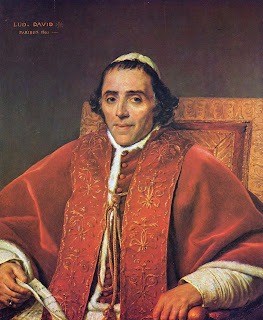Robert Lefèvre: Yelizaveta Demidova
Robert Lefèvre (1755-1830) was a prominent painter of portraits and history paintings. The subject of this portrait, Yelizaveta Demidova, was a Russian aristocrat who, with her husband (a diplomat), lived in Paris and were strong supporters of Napoleon, until he went to war with the Russians. They fled to Italy, then returned to Russia after Napoleon's defeat there in 1812. The couple split after the birth of their child and Yelizaveta returned to Paris to live out the brief remainder of her days (she died in 1818).


















.jpg)







